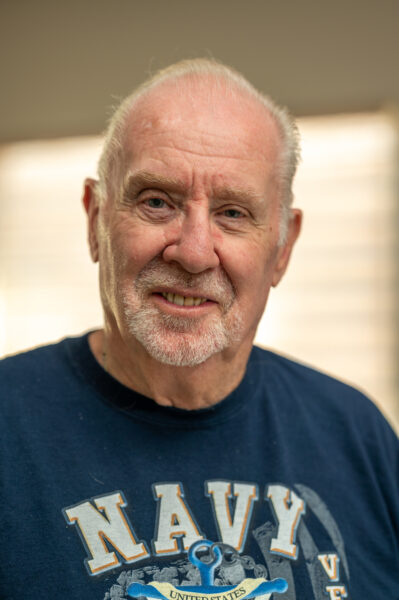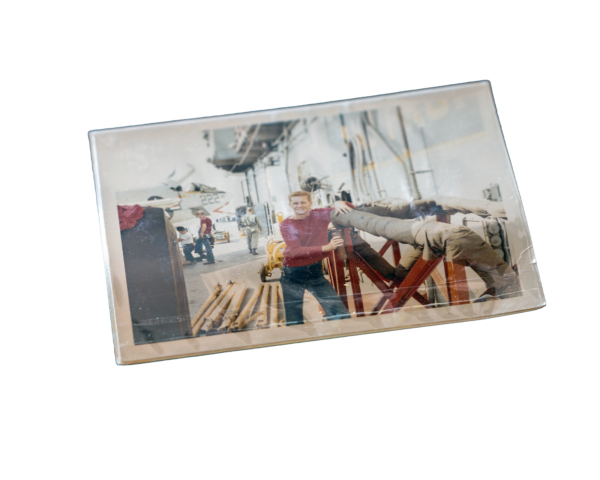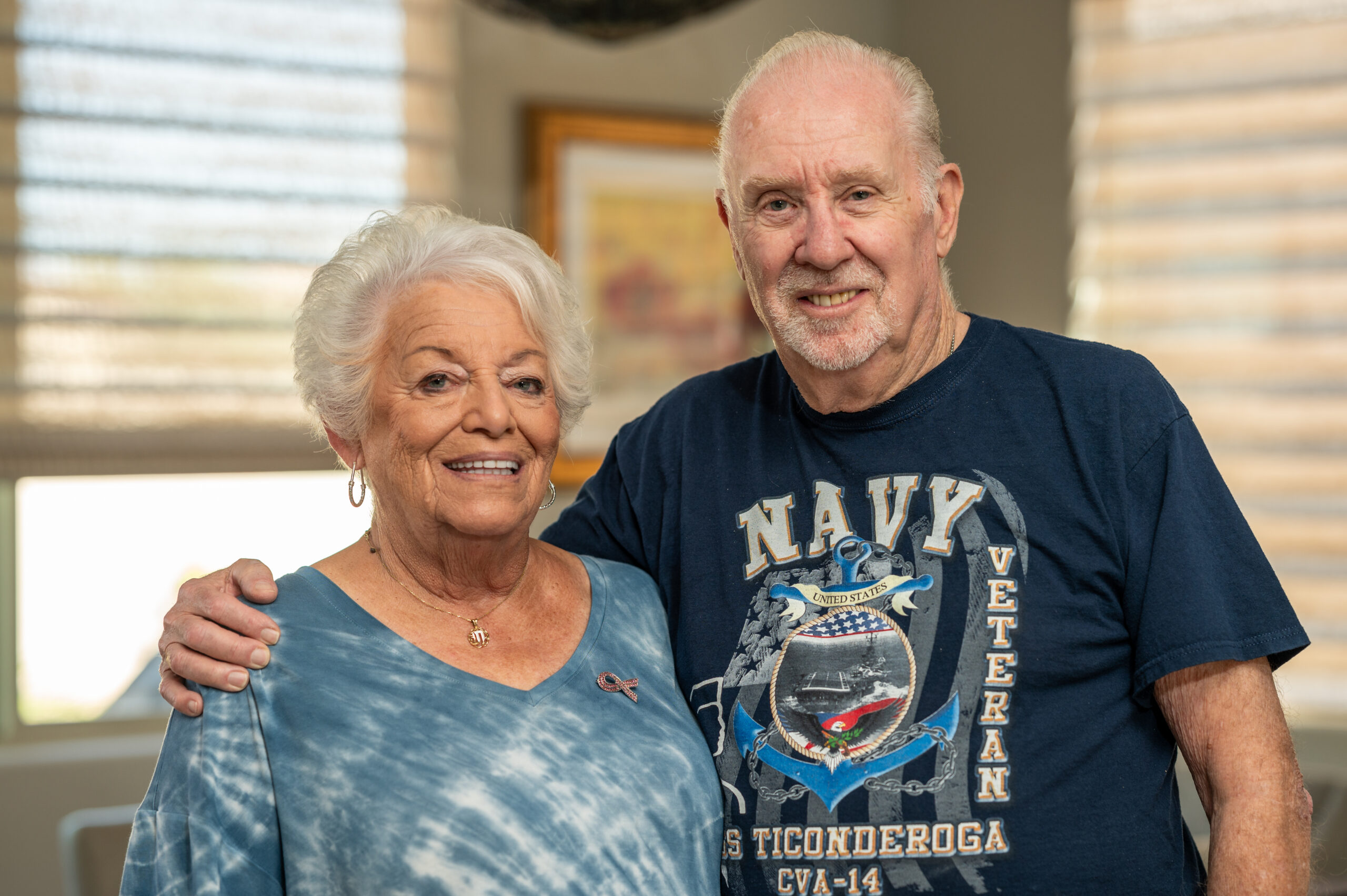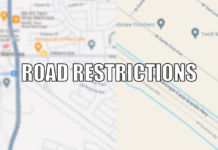Lloyd Frank admits his military stint was brief — he served in the U.S. Navy from 1964 to 1966. But don’t be too quick to understate the impact these two years had on this 81-year-old Maricopan.
A Brooklyn, N.Y., native, Frank joined the Navy after Uncle Sam served him a draft notice. The son of a World War II Navy veteran, that decision was in his blood.
After completing boot camp in May 1964, he was assigned to the USS Ticonderoga, an Essex-class aircraft carrier deployed in the Far East.
His first thought upon seeing the 980-foot-long ship that carried about 3,500 personnel: “My God, that is huge!”
But Frank didn’t have a moment to waste jumping in. He volunteered on the flight deck, where his duties included moving planes around and getting them started. Later, he served on the crash crew, fighting fires and dealing with other emergencies.
The Ticonderoga was on its sixth peacetime tour in the Western Pacific. That all changed in early August 1964. First, the Maddox destroyer was confronted in the Gulf of Tonkin while on routine patrol by North Vietnamese “junks” (boats used to ferry troops and supplies) and three Russian-built PT boats. About 200 miles south, a “general quarters” call sounded, ordering Frank and his shipmates to their battle stations.
“I have a surface target for you. This is no drill. I repeat, this is no drill.” Those words echo in Frank’s mind decades later.
The official response from Washington and President Lyndon B. Johnson was to shoot to kill if attacks persisted. The Ticonderoga pilots quickly flew in to support the Maddox and prevent any casualties and damage. Frank said the pilots destroyed the PT boats in what became the first shooting conflict involving a Navy ship since the end of the Korean War.

Johnson said: “As President and commander-in-chief, it is my duty to the American people to report that renewed hostile actions against United States ships on the high seas in the Gulf of Tonkin have today required me to order the military forces of the United States to take action in reply.”
Planes from the Ticonderoga and Constellation damaged or destroyed 25 North Vietnamese patrol boats and were credited with 90% destruction of an oil storage depot that represented one-tenth of the country’s petroleum storage capacity.
The U.S. involvement in Vietnam was in full swing.
Life on ship
Frank recalls extremely busy days on the Ticonderoga.
“We were doing flight operations 6 a.m. to midnight every day,” he outlined. “Our planes supported the Army and Marines who were on land. We took ammo on at least every other day — a lot of them were World War II-era bombs. We also supplied food and fuel to several destroyers once or twice a week.”
It was not uncommon for planes to return from missions riddled with bullet holes. There were a few crashes, too.
Although nearly six decades have elapsed, Frank vividly remembers the day-to-day experiences.
“It was red lights at night — no more white lights,” he said, explaining the decision helped avoid enemy detection. “Everything was done with hand signals. Planes were moving in every direction. It was a busy, hostile environment. You could walk into a prop or get sucked into an intake if you weren’t careful. They say working on the flight deck is the most dangerous job in the military.”
Frank took part in two lengthy periods of daily air combat operations. The first was upon his initial deployment in 1964. The second, after the Ticonderoga returned to Hunter’s Point Naval Shipyard in San Francisco in January 1955 for a five-month overhaul, commenced later that year and continued into the next.

“I never once felt scared of anything. You were too busy. You just had to do your job,” he contended. “We would sleep in a compartment with 120 guys in a four-high rack. It was 120 degrees in there and hot as hell. But you would get a couple of hours sleep and then go back to work.”
The Navy wanted Frank to extend his two-year tenure. He was ready to get married and had a job lined up, so he opted to leave. The initial six-year reserve commitment was waived due to his service in a combat zone.
Civilian experiences
Frank and his wife Joyce married 57 years ago. He was employed in the printing business, working on Wall Street for 40 years in New York. The couple spent 18 years in Las Vegas before the pandemic and the desire to be closer to grandchildren in Chandler brought the couple to Maricopa early last year.
“We were looking around, and we kept coming back here,” Frank shared.
In the late 1980s, Frank became involved with the Ticonderoga Veterans Association. The ship, commissioned in 1944 and serving 30 years, had a long and illustrious history. Frank was president of the group at one time and plans to attend the 51st annual reunion in San Antonio next year.
“There are shipmates there from every year. I met two who were with me on the ship in the same division,” he revealed. “Everyone sits around and tells war stories. As the years went by, we lost quite a few guys. Four years ago, we only had six World War II guys who could attend.”
Although Frank never set foot on land in Vietnam during his service, he did visit the country seven years ago.
“It reminded me that war is not a good thing, but kids need to know the history,” Frank said. “And Veterans Day is a very important day for all who served. We need to show our respect.”
Frank enjoys looking at the old newspaper clippings and relishing the memories they evoke.
“I don’t regret one minute of time I spent in the service,” he said. “It was a great learning experience. It made me a better person, a better man.”
Uniting Battle Buddies
Brian Agner attended last year’s Veterans Day ceremony at Province and quickly realized there were a lot of men and women living in the 55-plus community who had served their country in the military.
He later learned there was no organized effort to bring these veterans together. So, he started one. Today, nearly 70 veterans and a few family members belong to the group. Frank Lloyd is also a member.
“We’re not here to step on any toes,” Agner said. “We just want to bring people together to share stories and do fun things.”
The reaction, thus far, is “Why did it take so long?”
Agner served four years in the Air Force, primarily working on the Minuteman II missile system in the early 1980s.
The group, he says, “is going to do what it’s going to do. I don’t know what it will look like a year from now.”
What he does know is veterans share a special connection.
“No matter your period of time or your branch, there’s something about knowing you went through basic training and the discipline of doing a job and doing it well,” he asserted. “I worked in hiring and I was always happy to interview that person from the military, knowing they came from that structured background.”
The November edition of InMaricopa Magazine is in Maricopa mailboxes and available online.







![City gave new manager big low-interest home loan City Manager Ben Bitter speaks during a Chamber of Commerce event at Global Water Resources on April 11, 2024. Bitter discussed the current state of economic development in Maricopa, as well as hinting at lowering property tax rates again. [Monica D. Spencer]](https://www.inmaricopa.com/wp-content/uploads/2024/04/spencer-041124-ben-bitter-chamber-property-taxes-web-218x150.jpg)

![3 things to know about the new city budget Vice Mayor Amber Liermann and Councilmember Eric Goettl review parts of the city's 2024 operational budget with Mayor Nancy Smith on April 24, 2024. [Monica D. Spencer]](https://www.inmaricopa.com/wp-content/uploads/2024/04/spencer-042424-preliminary-budget-meeting-web-218x150.jpg)



![Alleged car thief released without charges Phoenix police stop a stolen vehicle on April 20, 2024. [Facebook]](https://www.inmaricopa.com/wp-content/uploads/2024/04/IMG_5040-218x150.jpg)




